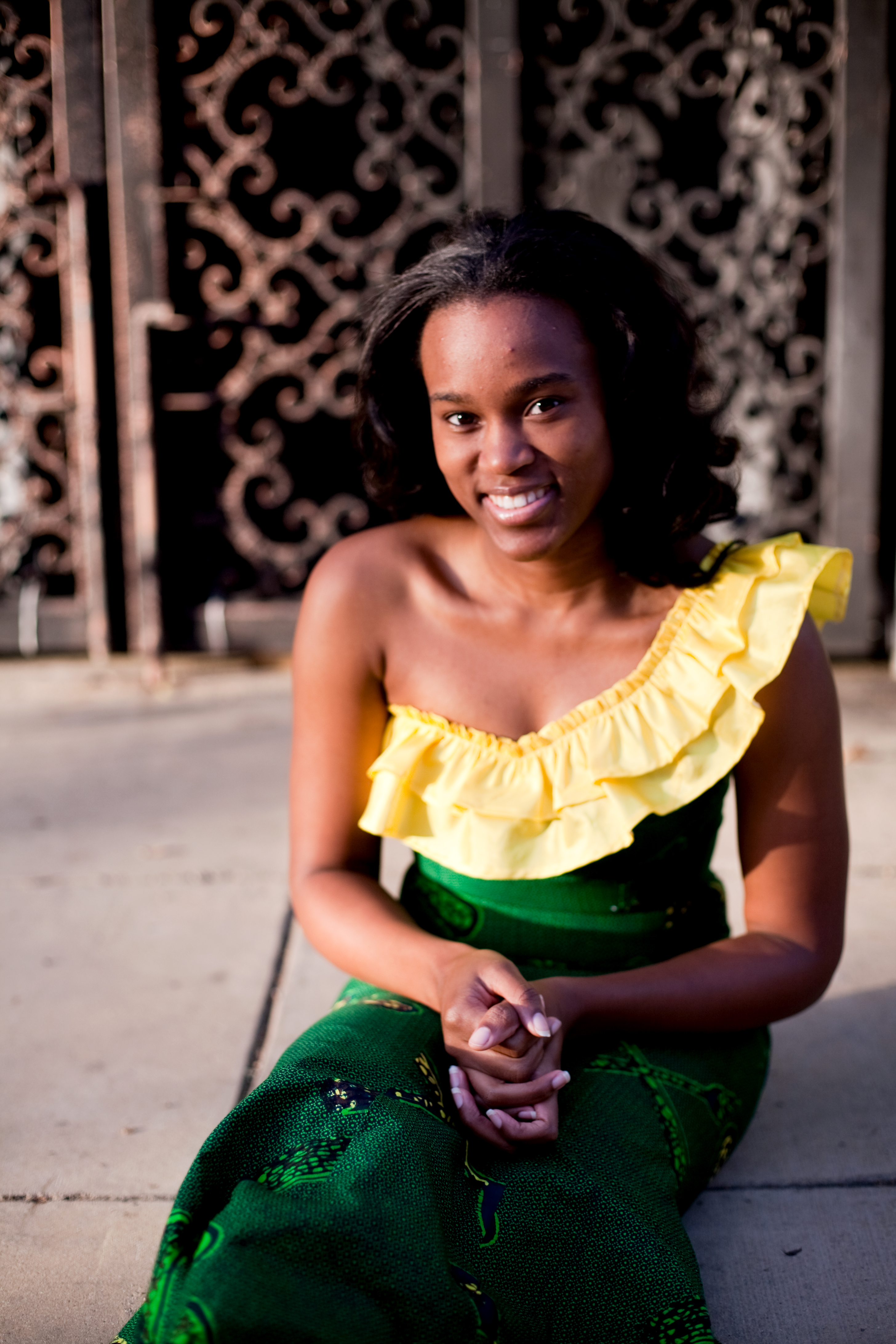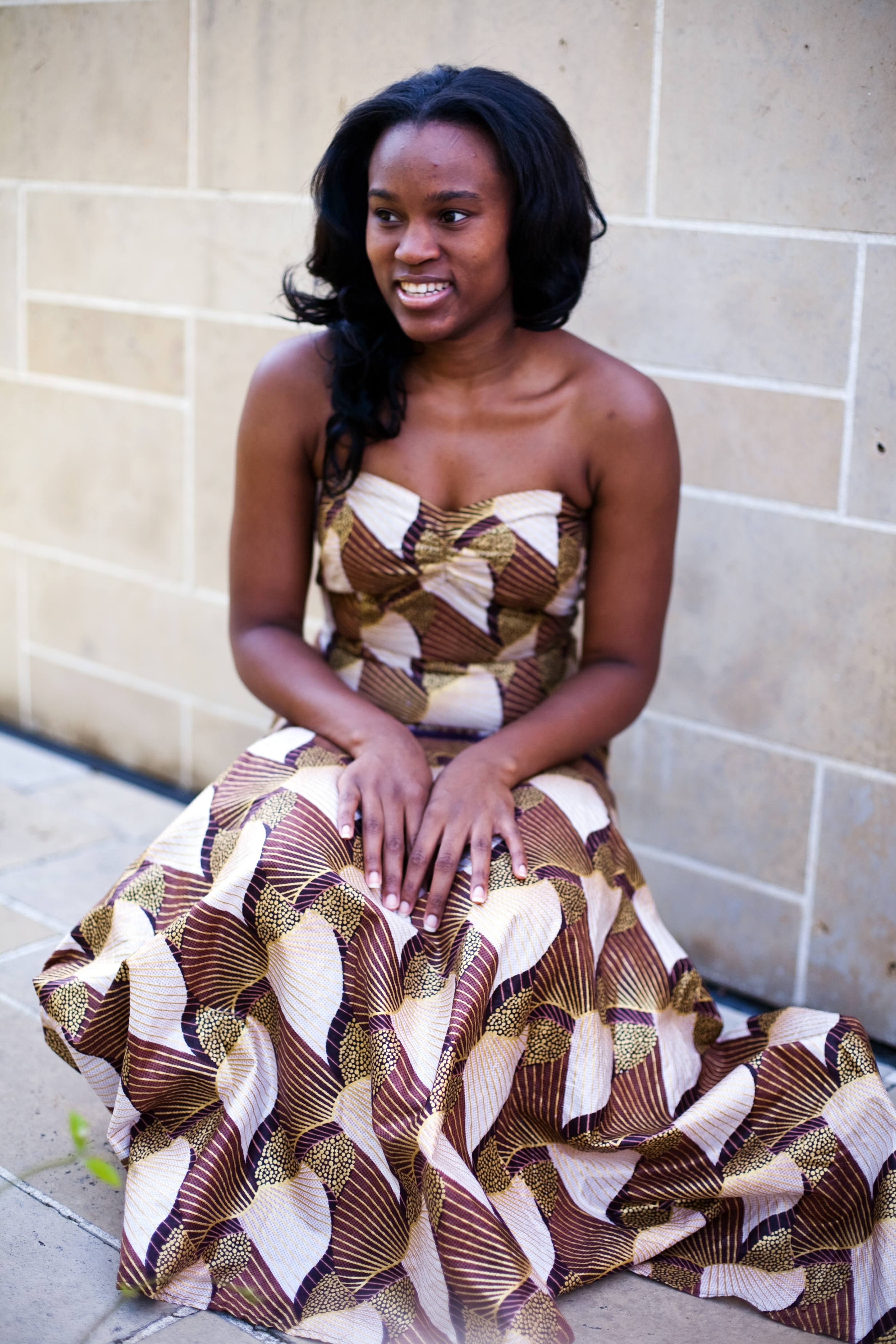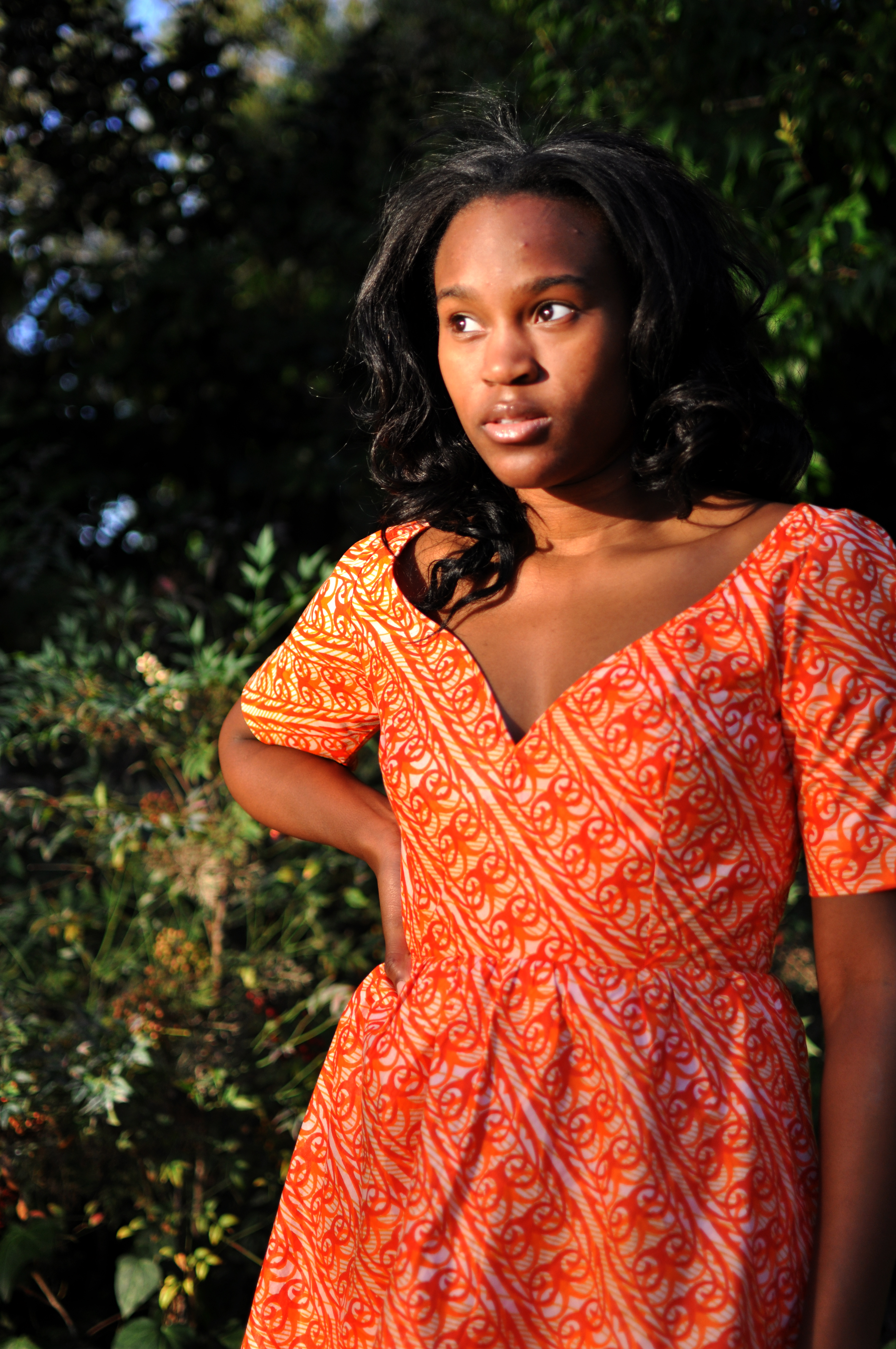

In the bedroom shared by third-year students Nina O’Koye and Deborah Akinsilo, sociology and history students, respectively, the collage of photos surrounding the Nigerian flag stands out brilliantly. Parts of the flag (a strip of dark and vibrant green, then white, then green) are covered by photos of relatives dressed in traditional African attire.
There are pictures of friends at parties and in portraits, with large head scarves taking up the upper half of the photos, and dressed in eye-catching, brightly colored fabrics. One picture that sticks out is a large sepia portrait that shows Akinsilo’s grandmother in a white blouse and a matching wrap skirt and headscarf standing next to one of her adult daughters, who is dressed similarly in blue.
For certain occasions, ranging from weddings to parties for landmark birthdays and religious holidays, a traditional outfit for Nigerian women consists of the iro (a long piece of fabric that is wrapped around the waist, constituting a skirt), the buba (an oversized shirt) and the gele (another piece of fabric wrapped around into a headdress).
“The bigger the gele is, the flashier it is. If you have a smaller head scarf, well, you’re not as stylin’,” Akinsilo said.
Fashionable Nigerian clothing is determined by the size of the gele, current trends seen on the streets and in Nigerian fashion publications, cuts determined by international designers, and the originality of the design on the fabric. As in many cultures, women spend up to hundreds of dollars to secure a look and stand out.
“Most of the time you go to a tailor, and he makes each outfit exactly the way you want it,” Akinsilo said. “You’re going to be the only one wearing that style and that print.”
The designs can be made with several different types of fabrics. Lace, which is expensive, tends to rise and fall in popularity based on fashion trends. Ankara is both a somewhat stiff type of fabric and a style of pattern design. Depending on the way it is styled, it can be worn to christening ceremonies or in day-to-day life. Damask and aso oke (a heavy woven fabric for special occasions) are also fabrics sometimes used.
But there’s a trend, a seeming result of globalization and the spread of American culture and fashion throughout the world, that has created a sense of reinvention among Nigerian youths. This trend is characterized by an increase of American and international cuts and designs with Nigerian fabrics.
“Younger people branch out more,” O’Koye said. “They do more things with what they want with their Nigerian clothes, whereas older people stick to the skirt and blouse and … the regular stuff, the stuff that they’re used to, the stuff that they grew up with.”
The globalization trend has also affected the way older generations of Nigerian women dress.
“My mom still gets skirts and blouses, but they’re trendier than her older outfits that she has from 10 years ago or even five years ago,” O’Koye said. “The style changes, but with the younger people it’s a little more fashion-forward. We look, and we can see American clothes and in our mind put that into a Nigerian fashion.”
UCLA Nigerian students have a chance to show off their West-meets-West Africa styles every year at their annual cultural show, at which the members of the Nigerian Students Association put on a fashion show.
Adanna Kpaduwa, a fifth-year French student, was the 2008-2009 NSA vice president and fashion show coordinator. Kpaduwa said she tried to focus more on getting designers to showcase American-influenced Nigerian designs as opposed to traditional Nigerian dress. Parents, who are invited to attend the culture show, are usually impressed.
“(Parents are) usually proud of it because it’s our interpretation of what we think our culture is. They’re really amazed by how well we portray our culture and how well we understand it,” Kpaduwa said.
For Kpaduwa, this fashion trend does not make clothes inherently Nigerian because of the fabric but because of the way the wearer works the entire outfit.
“It’s everything, because even if someone took the fabric and made a T-shirt, you still won’t get that African vibe,” Kpaduwa said. “I think it depends on the person. It depends on how you carry yourself. It depends on the jewelry, it depends on how you accessorize the dress.”
According to Kpaduwa, the key to displaying a certain type of style comes from within a person.
(A person is fashionable) because they’re confident in what they’re wearing. … They could be wearing a paper bag, but if they’re rocking … people are going to want to wear it because of the confidence that exudes from the outfit,” Kpaduwa said.
